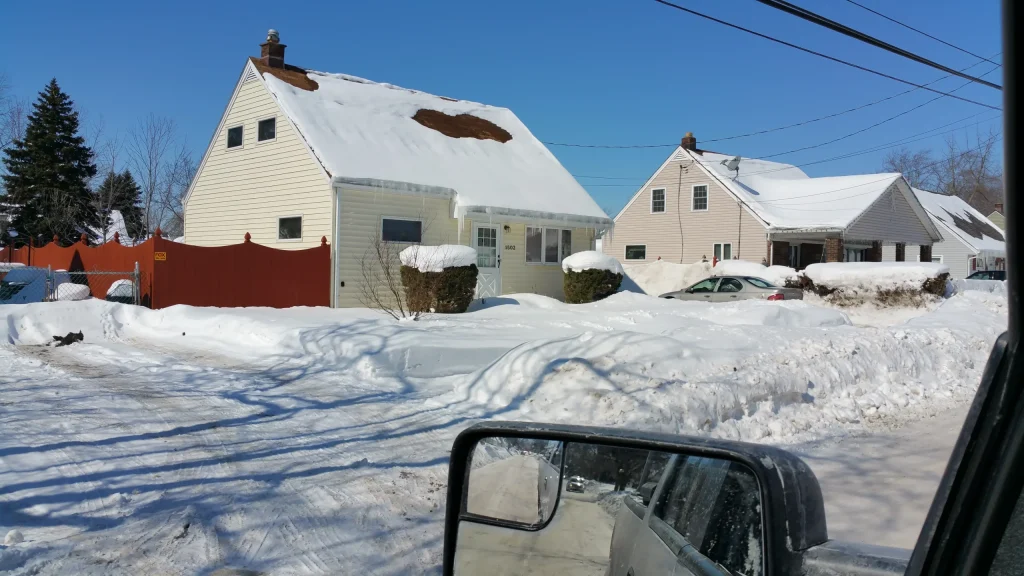Did you know? In regions like Western New York, over 65% of annual home insurance claims are linked to roof damage from extreme weather events such as heavy snow, high winds, and pounding rain. That’s a clear sign that your roof’s resilience could make or break your home’s safety and value. If you want to avoid expensive repairs and ensure peace of mind, these 12 proven strategies for roofing for extreme weather are your all-season survival kit.
“After 50 years in the roofing business, I’ve seen how preparation turns a vulnerable roof into a fortress against Western New York’s harshest weather.” – Master Roofer, Fiddler Roofing
What You’ll Learn: How to Strengthen Your Roofing for Extreme Weather
- Understand the vital steps to protect your roof from extreme weather
- Learn about roofing materials and systems best suited for severe climates
- Discover expert tips for preventing common roofing disasters
Why Roofing for Extreme Weather Is Essential
“Western New York weather can be brutal on roofs. From heavy snow and ice to pounding rain and high winds, your roof takes the hit long before the rest of your home does.”
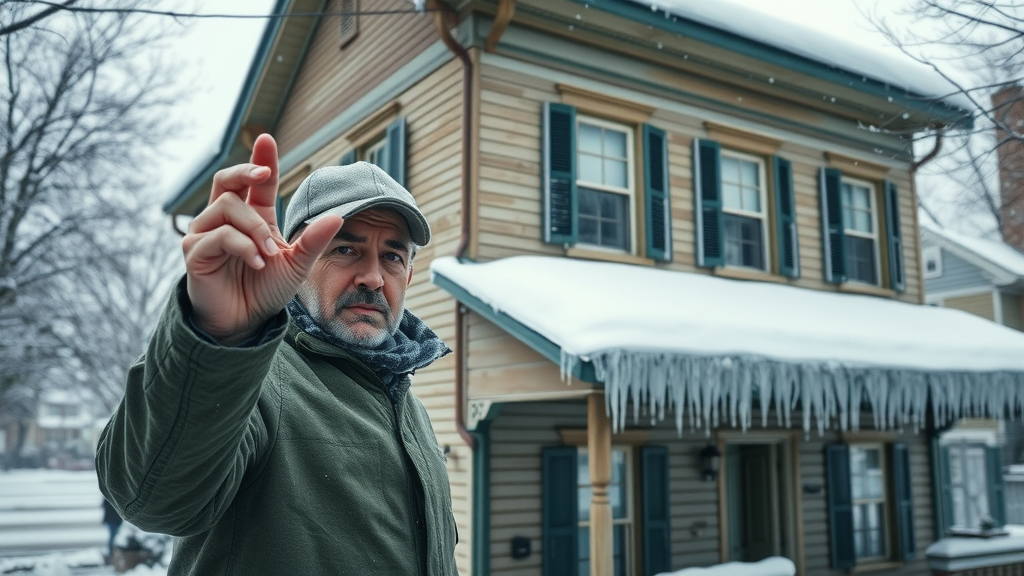
The Cost of Roof Neglect During Extreme Weather
Neglecting your roof in areas prone to severe weather is a risk no homeowner should take. Harsh weather events—from heavy snow to relentless rain and high winds—can quickly turn minor roofing issues into catastrophic damage. When your roofing material is compromised, leaks, rot, or total roof failure may result. Insurance claims spike, out-of-pocket repairs add up, and your home’s value can plummet. Homes with robust roofs not only enjoy better protection and peace of mind, but also see higher curb appeal and lower long-term maintenance costs. Proactive care is always less expensive than emergency reaction, especially during harsh weather conditions.
Many don’t realize that a single neglected area, like a clogged gutter or a missing shingle, can initiate water intrusion leading to insulation damage and mold. With proper roofing solution and strong roofing materials, homeowners can prevent these costs while extending roof lifespan. Investing in durable roof solutions, like metal roofing or impact-resistant asphalt shingles, will minimize the risk of costly weather disaster repairs.
When considering upgrades or repairs, it’s also important to recognize the warning signs of poor workmanship or unreliable service. Spotting roofing contractor red flags early can help you avoid costly mistakes and ensure your roof is truly prepared for the next severe weather event.
How a Roofing System Functions Under Harsh Weather
A roofing system is a coordinated group of materials and techniques designed to shield your home from the wrath of Mother Nature. During extreme weather, each layer has a crucial role: the outer roofing material (such as asphalt shingles, tiles, or metal roof) defends against rain, hail, and wind speeds, while flashing, ice & water shields, and attic ventilation keep moisture, ice, and heat under control. Proper installation is key—the best roofing system resists uplift from high winds, sheds heavy snow and rain, and prevents leaks even when water tries its hardest to get in.
Under harsh weather conditions, a roofing system that integrates advanced underlayment, secure flashing, and robust attic insulation will dramatically improve durability. Energy efficiency is boosted with cool roof designs and high-performance materials that also reduce cooling costs in summer heat. When the unexpected strikes, only a properly planned, professionally installed roofing for extreme weather stands between your home and disaster.
1. Schedule Regular Inspections on Your Roofing for Extreme Weather
- Benefits of yearly inspections
- Detecting early signs of damage from severe weather
- Working with certified roofing contractors
Proactive annual inspections are the cornerstone of any successful roofing for extreme weather strategy. A trained roofing contractor can spot hidden problems—like loose flashing, missing or worn asphalt shingles, or developing leaks—before they escalate into emergencies during a weather event. Inspections should be scheduled at least once yearly, ideally in the spring or after major storms, to catch snares that harsh winter or summer storms may cause. Inspections from certified experts help maintain warranty compliance and document your roof’s health for insurance purposes.
A professional’s keen eye for potential trouble areas is invaluable. Working with local, certified experts familiar with your region’s severe weather trends ensures your inspection covers all bases: damaged shingles, failing roofing materials, compromised gutters, and structural vulnerabilities. Early detection means minor repairs can be made before costly weather-related events cause widespread damage, maximizing the roof’s lifespan and your home’s protection.
2. Keep Gutters Clear to Protect Roofing for Extreme Weather
- The impact of clogged gutters during heavy rain and snow
- Installing gutter guards for low-maintenance protection
- Tips on cleaning for optimal roofing solution
Your gutters are essential to channeling water and melting snow away from your house, preventing costly roofing material failure. Clogged gutters allow rainwater and heavy snowmelt to back up under roofing materials, leading to leaks, ice dams, and rot. Gutter overflow during severe weather often causes issues that could otherwise be prevented.
To optimize your roofing solution, clean gutters at least twice a year—early spring and late fall. If you live in an area with abundant trees, consider more frequent checks. Gutter guards are an effective, low-maintenance way to prevent debris buildup. When gutters work efficiently, you reduce the risk of water intrusion, ice damming, and damage to both the roof and your home’s foundation.
3. Maintain Proper Attic Ventilation for Enhanced Roofing for Extreme Weather
- Importance of ridge vents, soffit vents, and baffles
- Preventing moisture buildup and ice dams in your roofing system
A well-designed roofing system includes not only quality exterior roofing materials but also optimized attic ventilation. Ridge vents, soffit vents, and baffles create balanced airflow, keeping the attic space dry in all seasons. In winter, proper ventilation mitigates ice dam formation, while in summer, it reduces cooling costs and prevents heat damage to your roofing material.
Without good airflow, trapped warm air melts snow on the roof, causing refreezing and dangerous ice dams. Moisture buildup fosters mold and weakens structural elements. Upgrading attic ventilation is a crucial component for a durable roof that stands up to extreme weather. When in doubt, consult your roofing contractor to ensure your ventilation meets manufacturer and building code requirements.
Watch: Expert Inspection Techniques for Roofing for Extreme Weather (Video link)
4. Upgrade Insulation to Improve Roofing for Extreme Weather Performance
- How insulation affects energy efficiency
- Reducing ice dam risk and heat loss
High-performance insulation is one of the unsung heroes in modern roofing for extreme weather. By upgrading insulation in your attic and roof cavities, you vastly enhance energy efficiency and minimize heat loss during frigid winters. Proper insulation keeps warmth inside, lowering heating bills and reducing the temptation for snow to melt unevenly on your roof—a major cause of damaging ice dams.
Energy efficiency upgrades also contribute to comfortable, stable indoor temperatures and help roofing materials last longer. Insulation acts as a barrier against both extreme cold and summer heat, reducing the workload on HVAC systems and decreasing the chance of condensation or mold within the roofing system. This holistic approach protects your investment and helps cultivate a truly durable roof.
5. Install an Ice & Water Shield as a Key Roofing Solution
- Critical areas to protect: eaves, valleys, chimneys
- Types of underlayment and their benefits in severe weather
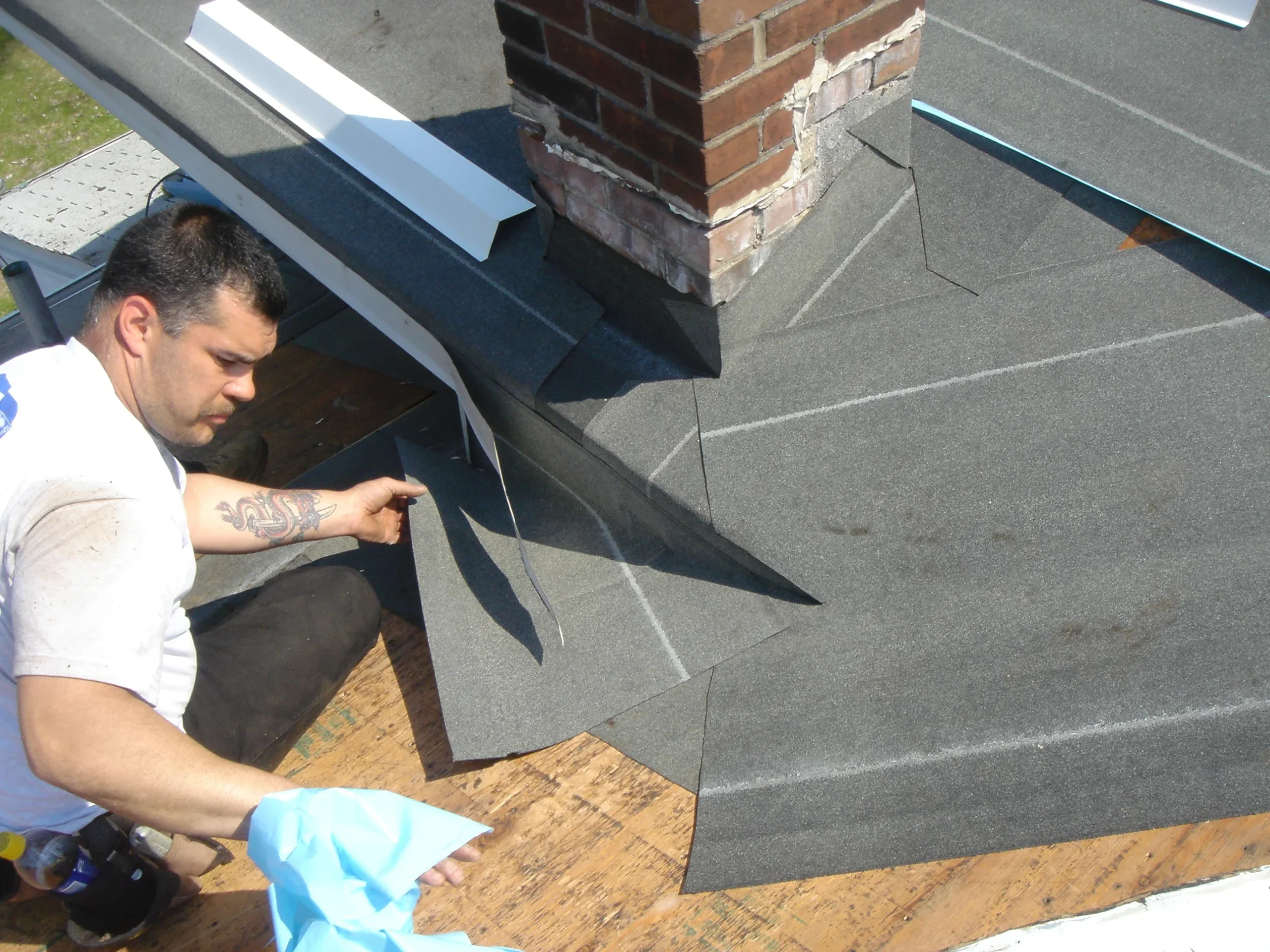
An ice & water shield is a modern, self-sealing underlayment applied beneath your shingles in vulnerable roof areas. Eaves, valleys, and spots around chimneys are most prone to water infiltration during heavy rain or freeze-thaw cycles. Ice & water shields are specifically engineered to provide extra protection in severe weather, forming a waterproof seal that prevents leaks even if outer roofing materials are damaged.
There are several types of underlayment available, such as synthetic, rubberized, or bituminous membranes. Each offers varying degrees of weather protection, but the best shields feature strong adhesion, flexibility across temperature ranges, and resistance to tears or punctures. Ask your roofing contractor for recommendations on underlayments proven in your local climate, especially for areas prone to heavy snowfall and ice.
6. Reinforce Flashing for Maximized Roofing for Extreme Weather Protection
- Checking and upgrading flashing at vulnerable joints
- Common flashing failure points: chimneys, skylights, vents
Flashing is the unsung guardrail in your roofing system, installed at joints and transitions where water naturally tries to find a way in. During extreme weather, even a small gap or improperly sealed piece of flashing can invite leaks, especially around chimneys, skylights, and vent stacks. Regularly checking and reinforcing these vulnerable areas ensures your durable roof won’t be undermined by a sudden weather event.
Upgrade to modern, rust-resistant materials (such as aluminum or copper) and insist on precise installation specifications. Pay special attention to locations historically known for leaks in older homes. A weather-tight flashing installation, done by a skilled roofing contractor, is key to stopping water in its tracks and maintaining confidence in your roofing for extreme weather.
7. Trim Overhanging Trees to Prevent Roofing Material Damage in Severe Weather
- Risks of untrimmed branches and falling limbs on roofing materials
- Establishing a safe clearance zone
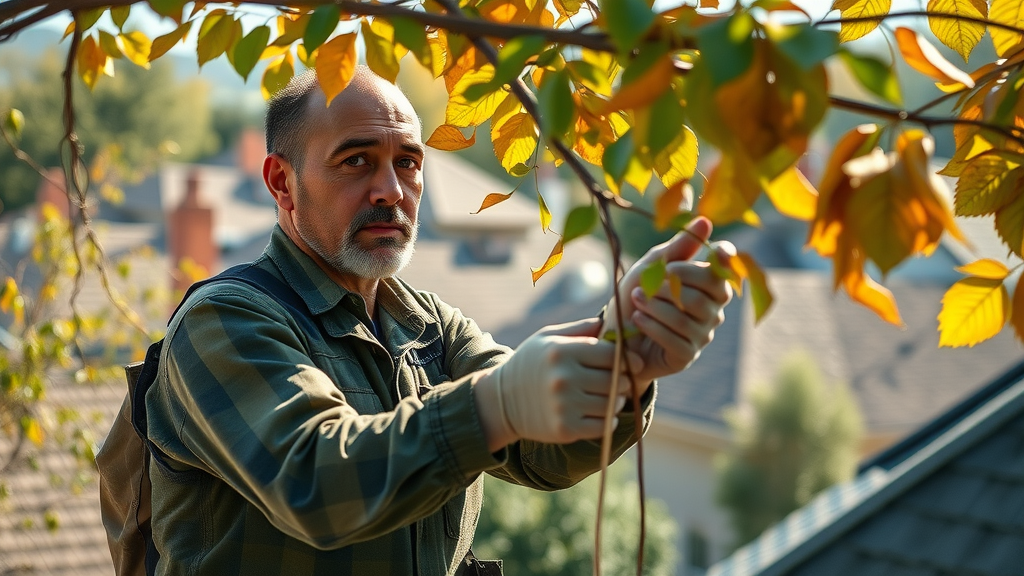
Trees add beauty to your property but untrimmed limbs spell trouble for roofing during storms. Overhanging branches scrape shingles, damaging protective granules and weakening the roofing material. In high winds or during heavy snowfall, branches can break and fall with devastating force, puncturing both modern and traditional roofing materials.
Establish a safe clearance zone of at least 5–10 feet between tree branches and your roof. Schedule professional tree trimming yearly and after each major storm. In addition to reducing risk of impact damage, clearances make ongoing maintenance (like gutter cleaning) easier, keeping your roofing system robust no matter what the forecast predicts.
8. Choose Impact-Resistant Shingles for Durable Roofing for Extreme Weather
- Benefits of CertainTeed Carriage House and similar shingles
- Comparing impact resistance, energy efficiency, and longevity
- Advantages over standard asphalt shingles
Impact-resistant shingles, such as CertainTeed’s Carriage House line, are engineered for the rigors of extreme weather. They withstand hail, flying debris, and high winds far better than basic asphalt shingles. These specialty shingles often earn Class 4 impact resistance ratings, a big advantage for homeowners in severe weather zones.
Impact-resistant roofing materials also offer greater energy efficiency, improved curb appeal, and longer service life—making them a smart, protective investment. When comparing options for a new roof, consider factors like wind resistance, manufacturer warranties, and compatibility with ice & water shields. Upgrading to premium shingle lines gives your roofing solution an edge against whatever nature throws at it.
9. Address Chimney & Pipe Penetrations for a Strong Roofing System
- Ensuring proper flashing and crickets
- Sealing pipe flanges for harsh weather
The regions around chimneys and pipes are particularly susceptible to leaks during severe weather. Properly installed flashing backed by an ice & water shield forms the first defense, while crickets (small, peaked structures behind wide chimneys) help divert water.
In areas with heavy snowfall, make sure that pipe flanges (the seals around plumbing vent pipes) are secure, undamaged, and made from weather-resistant materials. Annual inspection and timely replacement prevent leaks that often go unnoticed until significant interior or structural damage occurs. For the most reliable results, always have a professional roofing contractor inspect and upgrade these penetrations as needed in your roofing system.
10. Clear Snow Buildup: A Must for Safe Roofing for Extreme Weather
- Safe practices for snow and ice removal
- Using roof rakes & minimizing ice dam formation
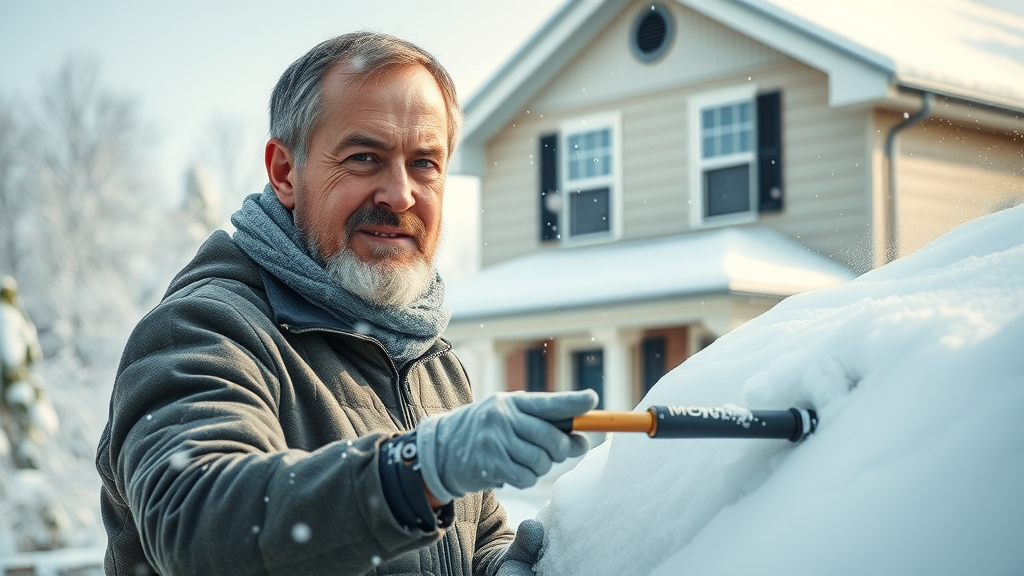
Heavy snow buildup dramatically increases the load on your roof, leading to structural weaknesses or sudden collapse, especially if even minor issues already exist. The safest way to clear snow is to use a telescoping roof rake from the ground, never standing on a snow-covered roof.
Consistently removing snow from the lower three to four feet at the eaves (where ice dams form) helps prevent water from backing under your roofing material. Avoid chipping or hacking at ice, which can damage shingles. Professional snow-removal services are also available for extreme buildup, ensuring you and your roof stay safe when facing severe weather.
11. Secure Roof Edges for Storm-Resistant Roofing Materials
- Proper installation of starter strips and secure nailing techniques
- Protecting vulnerable roofing material from high winds
The edges of your roof are the front line when battling high winds and severe storms. Starter strips—a reinforced row of shingles installed at the eaves—act as an anchor for all subsequent layers, while secure nailing patterns (per manufacturer specs) make it more difficult for winds to pry up roofing materials.
Ask your roofing contractor to use advanced fasteners and storm-rated installation methods for extra durability. For areas subject to frequent high wind events, select roofing materials with proven wind resistance, such as metal roofing or premium impact-resistant shingles. With proper edge protection, your roof will maintain its integrity even during the wildest weather swings.
12. Work with a Trusted Contractor for the Best Roofing for Extreme Weather
- Choosing certified, local experts for installation
- Importance of professional assessment and installation
No matter how advanced your roofing material, the most crucial factor in weather resilience is expert installation. A local, certified roofing contractor understands regional weather patterns, building codes, and the challenges unique to Western New York’s climate. They’ll ensure every aspect, from underlayment to flashing and final shingle, is expertly crafted for maximum durability.
Always check credentials, ask for references, and confirm warranty and insurance coverage. By trusting a professional, you can rest easy knowing your roofing for extreme weather can handle whatever the season brings, delivering lasting peace of mind and protecting your investment.
Comparison Table: Roofing Materials and Their Performance in Extreme Weather
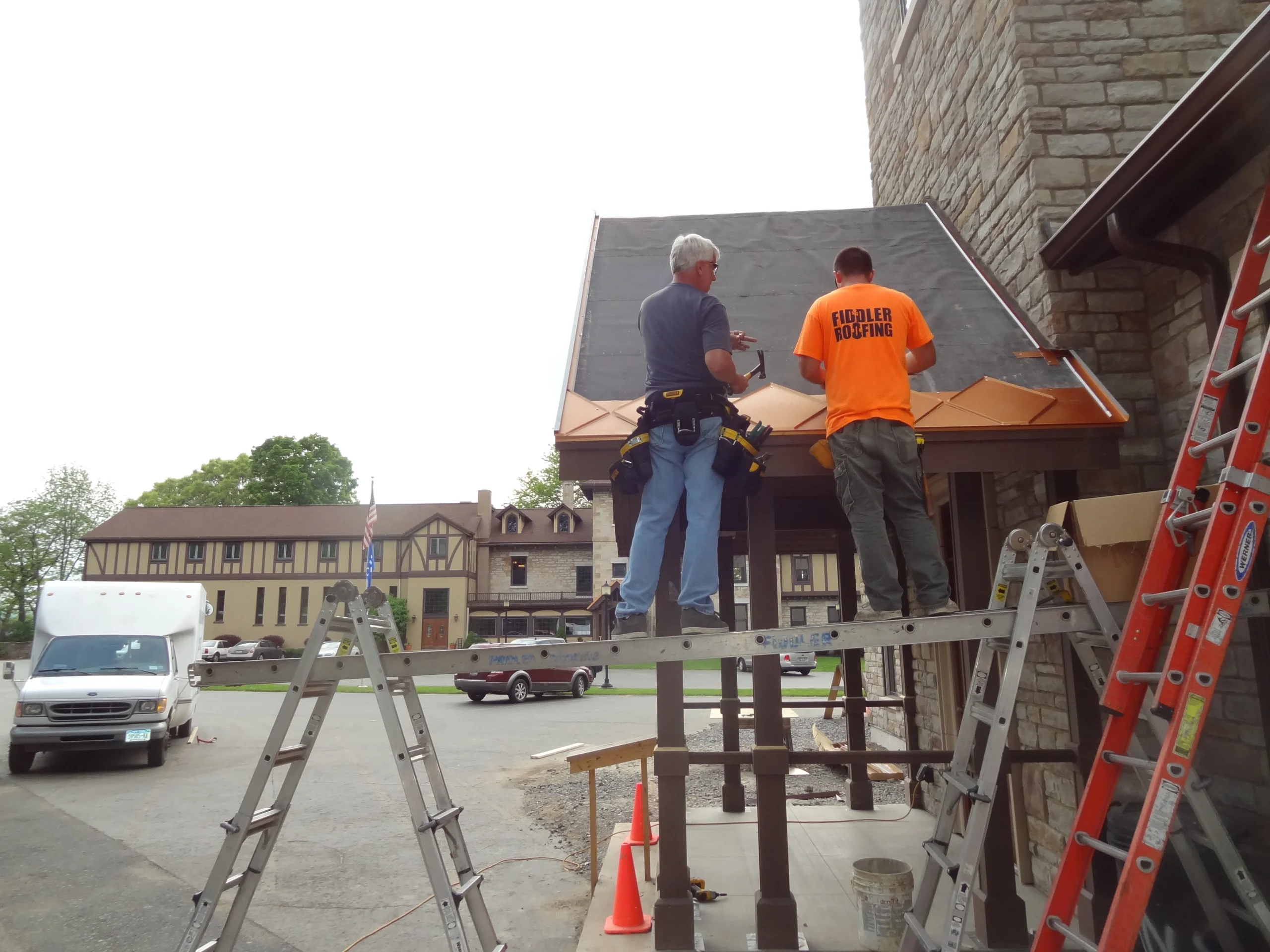
| Roofing Material | Resistance to Wind | Hail | Water | Fire | Lifespan | Energy Efficiency |
|---|---|---|---|---|---|---|
| Asphalt shingles | Good (up to 110 mph) | Moderate | Good | Fair | 15-30 years | Fair |
| Metal roof | Excellent (up to 140+ mph) | Excellent | Excellent | Excellent | 40-70 years | Excellent |
| Tile | Very Good | Moderate | Excellent | Excellent | 50+ years | Good |
| Wood shake | Fair | Poor | Poor | Poor-Fair | 20-30 years | Fair |
| Synthetic | Excellent | Excellent | Excellent | Very Good | 40-50 years | Very Good |
Download Roofing Selection Guide from Certainteed
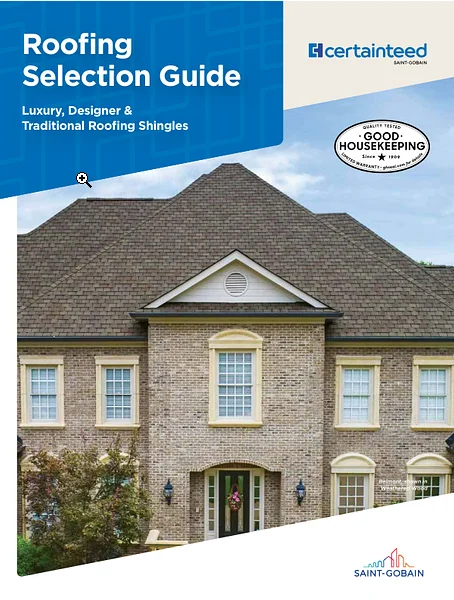
Expert Quotes: Roofing for Extreme Weather Insights
“Metal roofing offers unmatched durability for both severe weather and energy efficiency.” – Industry Expert
“Regular inspections are the first line of defense against hidden roof damage.” – Veteran Roofing Inspector
Lists: Key Steps to Implement Roofing for Extreme Weather Preparedness
- Annual inspection schedule
- Seasonal gutter maintenance
- Upgrading insulation and attic ventilation
- Installing ice and water shields
- Opting for impact-resistant roofing materials
- Partnering with certified roofing contractors
People Also Ask About Roofing for Extreme Weather
What type of roof is best for heavy rain?
- Answer: Metal roofs and properly installed asphalt shingles are proven roofing materials that handle heavy rain exceptionally well due to their water-shedding designs and durable construction.
What is the most storm resistant roof?
- Answer: Metal roofing and impact-resistant asphalt shingles are among the most storm-resistant options for roofing for extreme weather, capable of withstanding high winds and hail.
What is the safest roof for a tornado?
- Answer: Roofing systems with metal roof panels or specially rated impact-resistant shingles provide the best structural safety during tornadoes.
What type of roof would most likely be torn off in a hurricane?
- Answer: Poorly installed roofing materials, especially old or damaged asphalt shingles and lightweight wood shakes, are most vulnerable to being torn off in a hurricane.
FAQs: Roofing for Extreme Weather Essentials
- How often should my roof be inspected for extreme weather damage?
Your roof should be inspected at least once a year, and after every major weather event. Annual checks by a professional help catch hidden issues caused by severe weather. After storms or periods of heavy snow, schedule prompt inspections to identify and fix any new damage before it worsens. - What are the signs that my roofing material has been compromised after a storm?
Watch for missing or damaged shingles, bent or uplifted metal roof panels, granule buildup in gutters, leaking in the attic, or damp ceilings and walls. Early detection prevents small problems from spiraling into expensive repairs or full roof replacement. - Do energy efficiency upgrades help in extreme weather resilience?
Yes! Improvements like high-performance insulation, cool roof coatings, and proper attic ventilation boost both energy efficiency and extreme weather resilience. These upgrades stabilize indoor temperatures, prevent ice damming, and extend the lifespan of your roofing materials. - What is the best way to find a trusted roofing contractor in my area?
Seek out contractors with local experience, solid reviews, manufacturer certifications, and full licensing and insurance. Ask for portfolio samples and references. Local experts know the building codes and weather conditions unique to your region, ensuring professional and reliable roofing for extreme weather.
Key Takeaways on Roofing for Extreme Weather
- Consistent maintenance extends roof life and improves safety
- Choosing high-quality roofing materials is crucial for storm resistance
- Expert installation is non-negotiable for weather-prone areas
Conclusion: Invest in Roofing for Extreme Weather and Safeguard Your Home
- Comprehensive roof care—including inspections, modern materials, and professional installation—offers long-term peace of mind and financial savings. The right roofing solution is a true investment in your home’s safety and value.
- Be proactive, not reactive: protect your home and budget from the next severe weather event with proven strategies and expert roofing contractor help.
If you’re ready to take your home’s protection to the next level, consider how a well-timed roof replacement can maximize both your property’s value and its resilience against the elements. Discover how to make the most of your investment and ensure your new roof is built to withstand whatever nature brings by exploring our guide on maximizing your roof replacement opportunity. This resource offers strategic insights on timing, material selection, and long-term planning—empowering you to make informed decisions for lasting peace of mind. Don’t just weather the storm—future-proof your home with expert advice and proven solutions.
Contact Us for Your Roofing for Extreme Weather Needs
- 📞 Call us at 716 284 1322 for an inspection or to discuss the best roofing solutions for Western New York’s extreme weather challenges.

